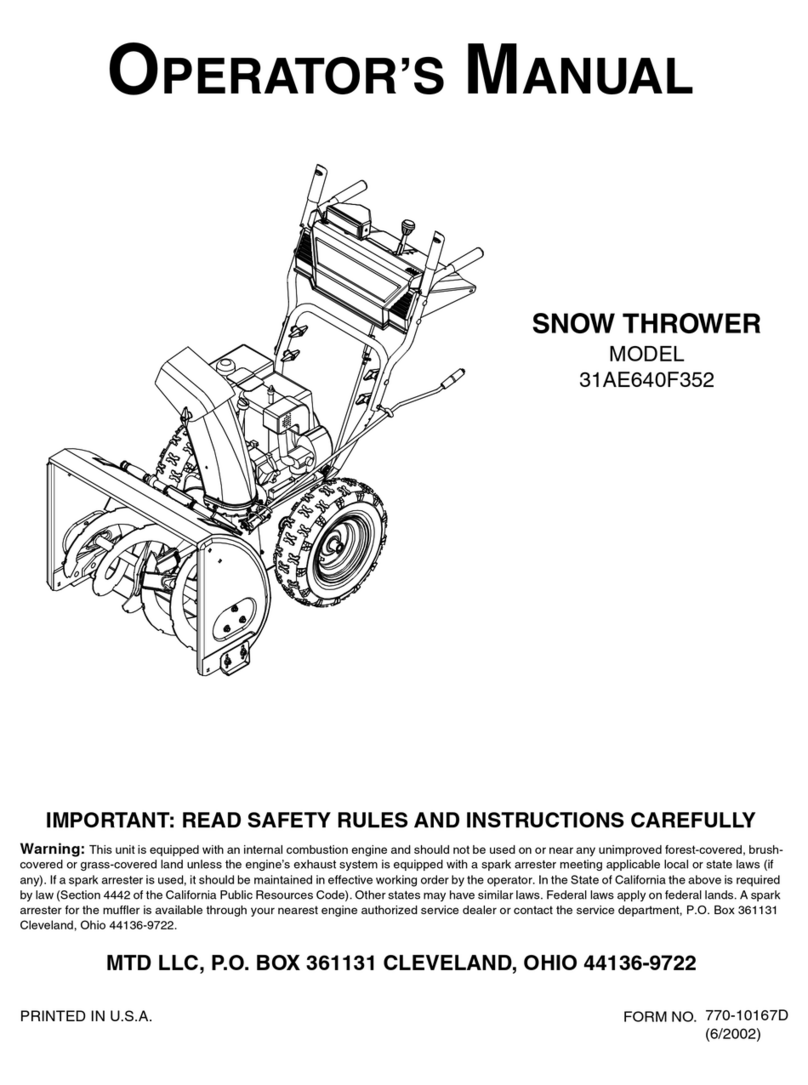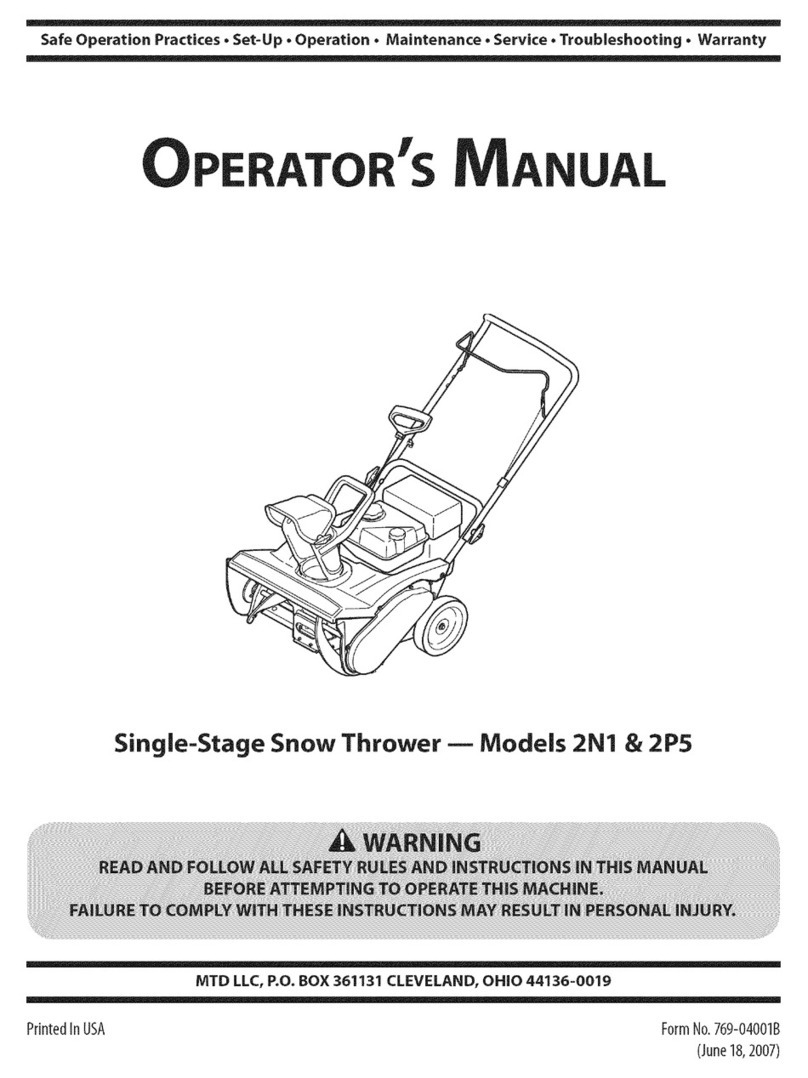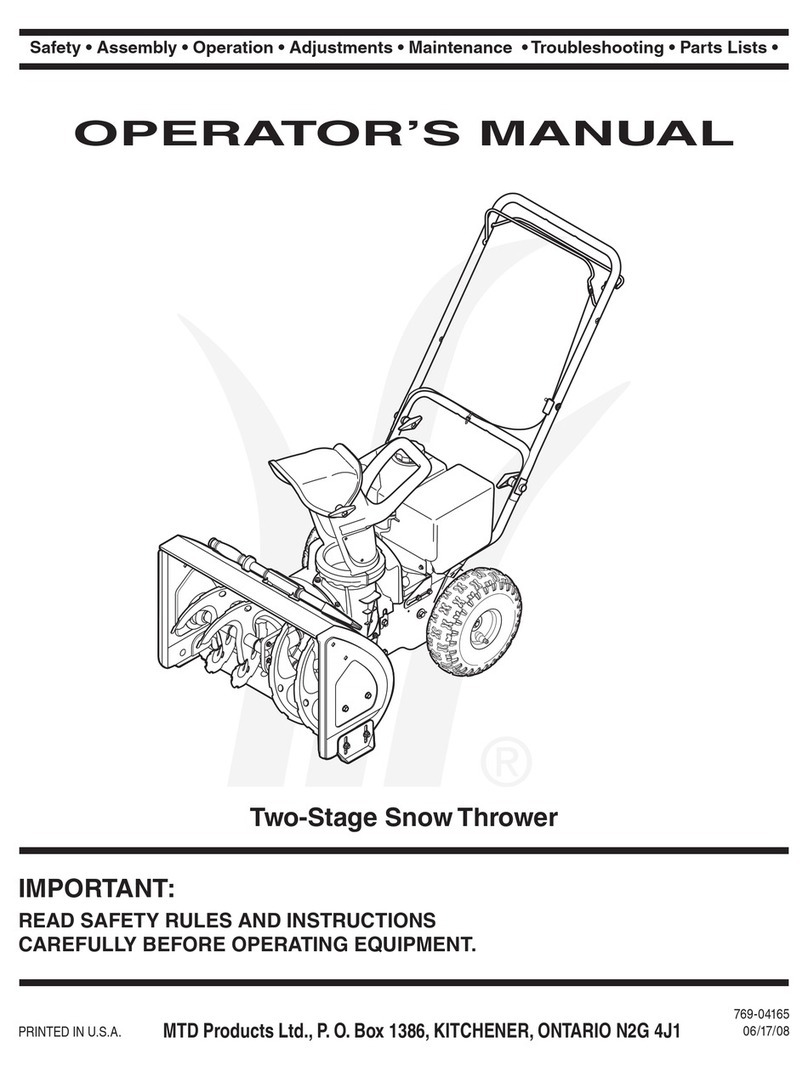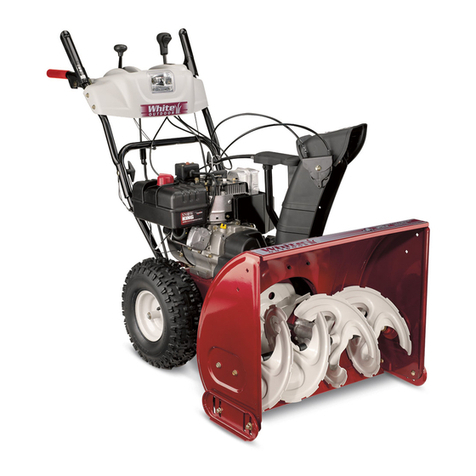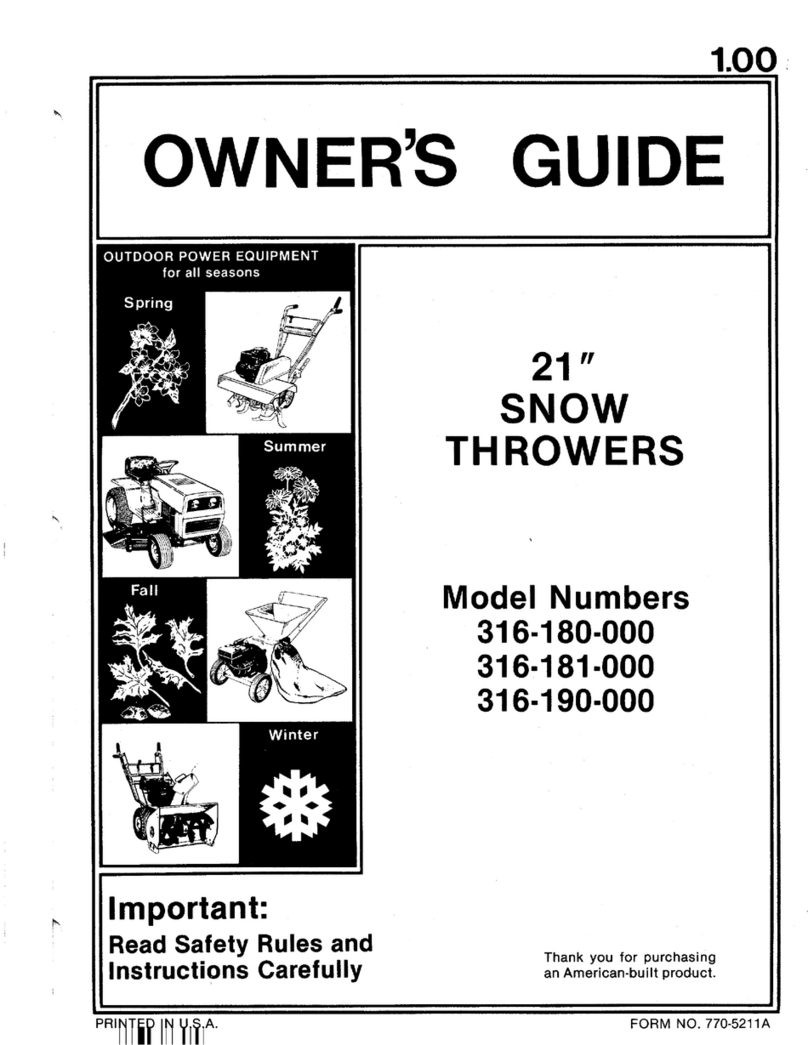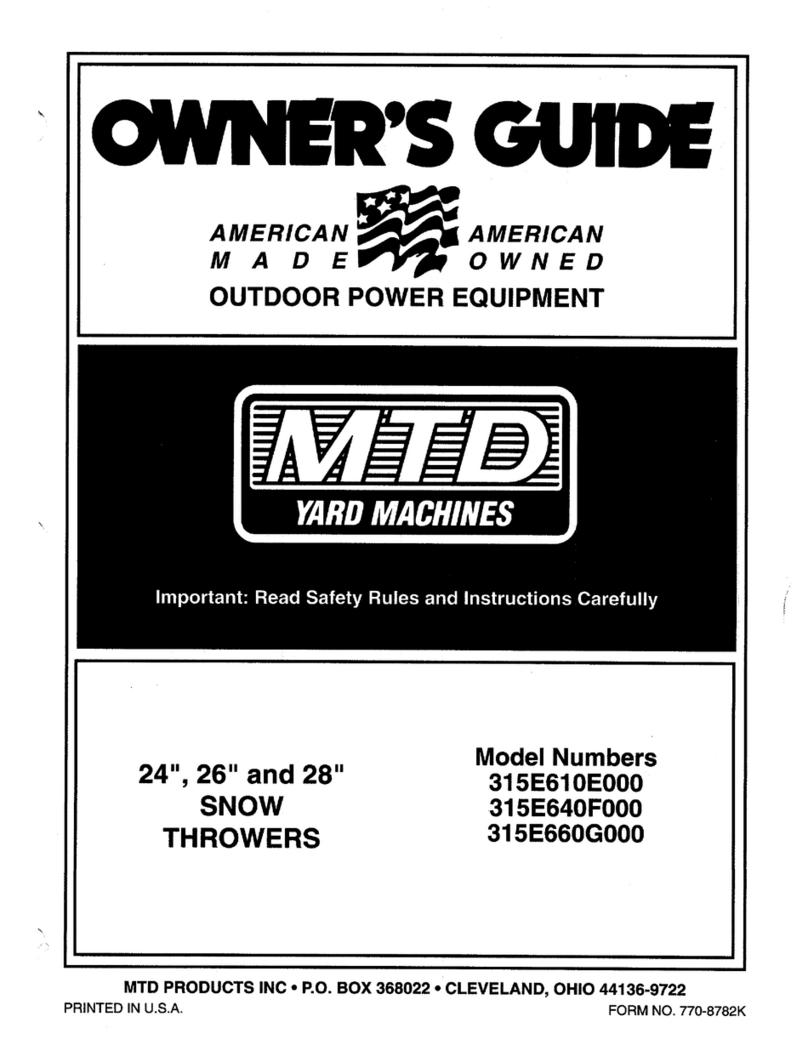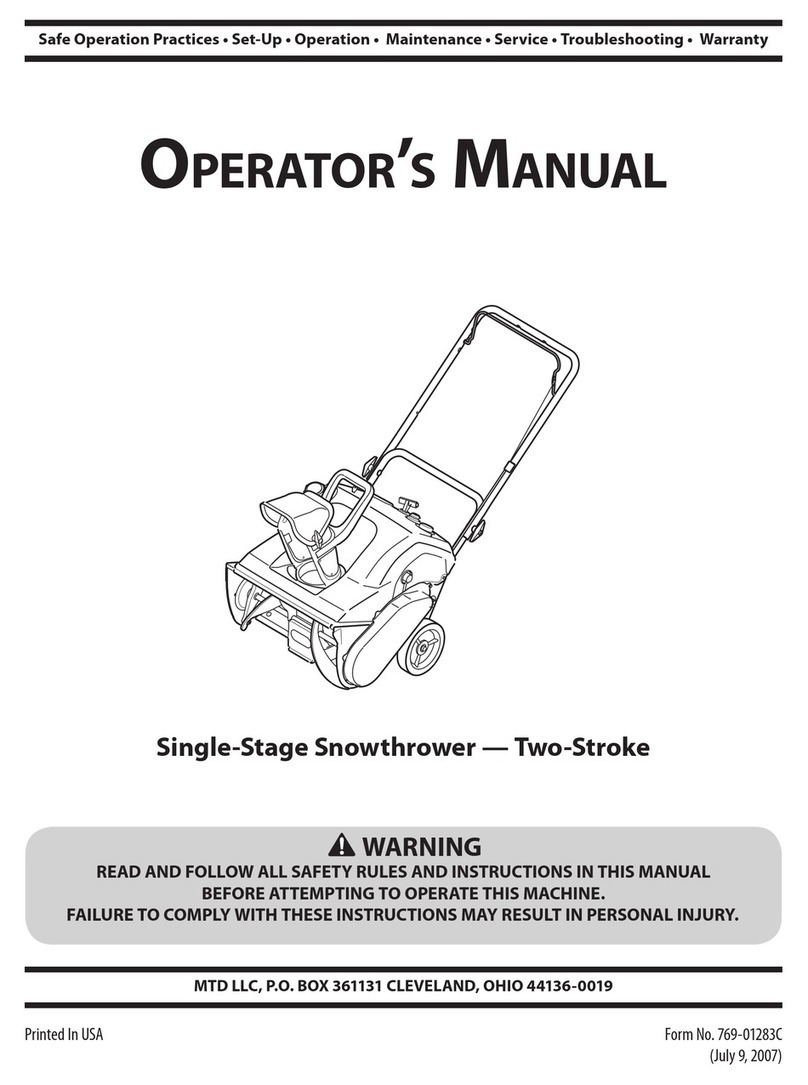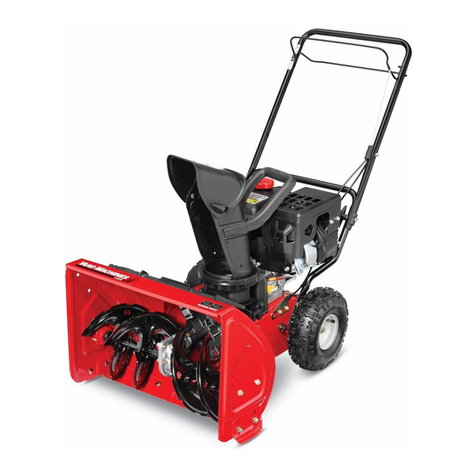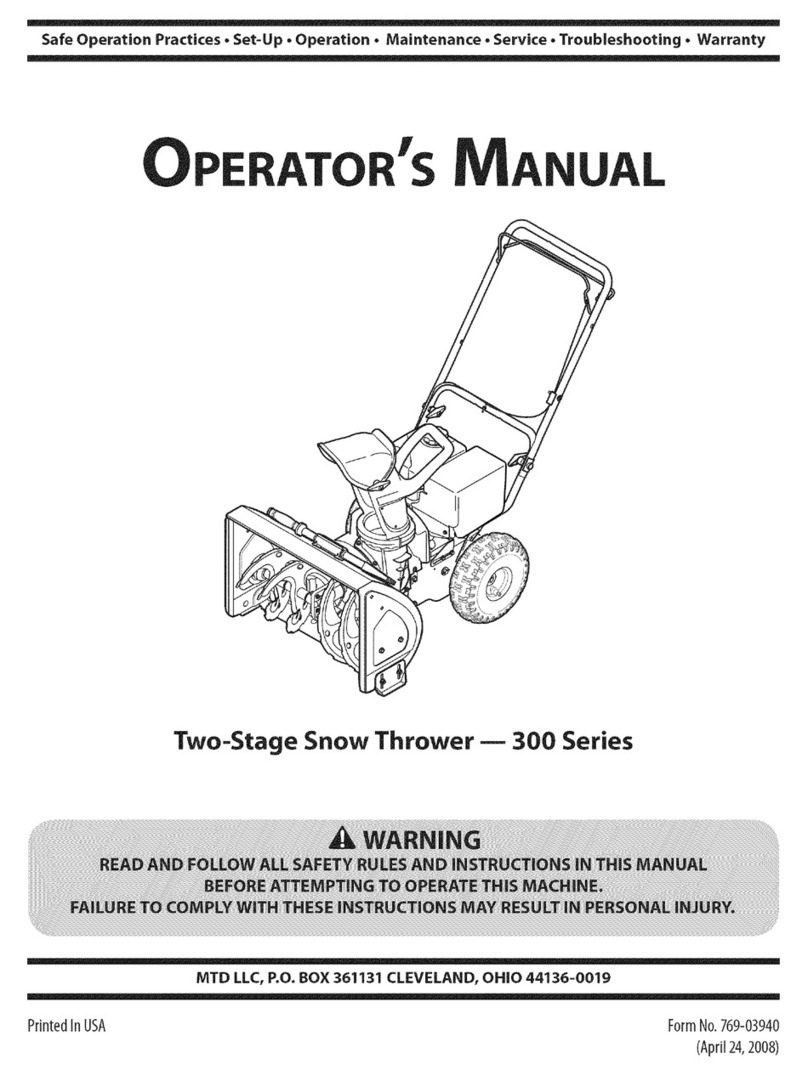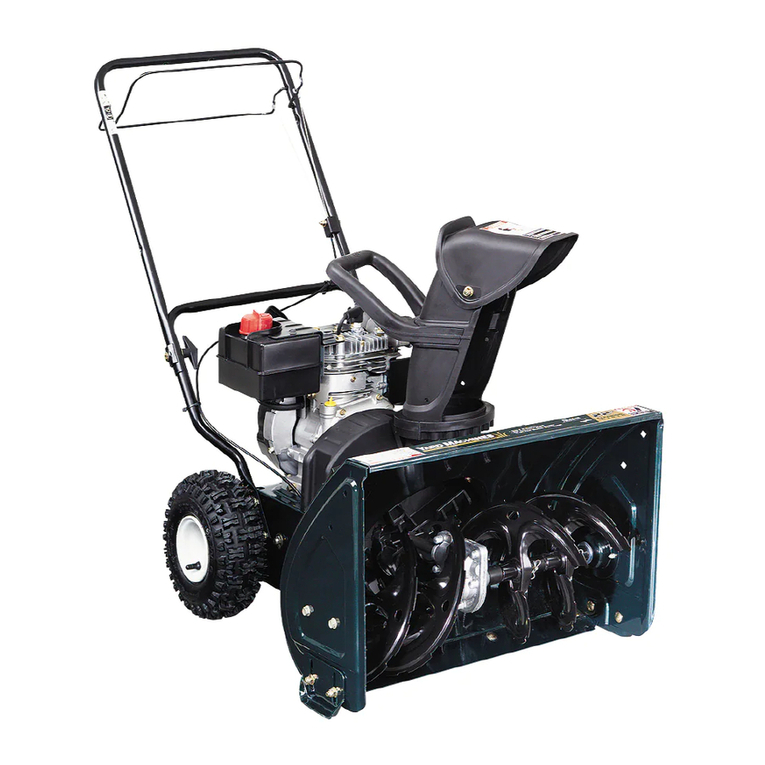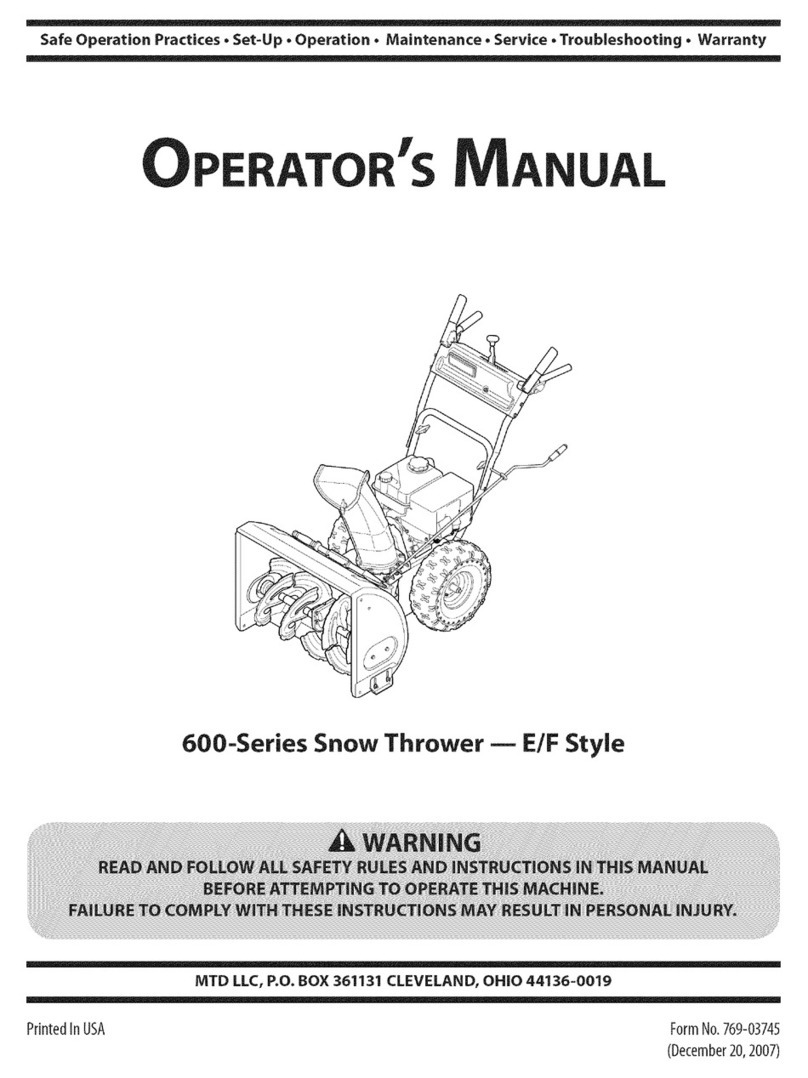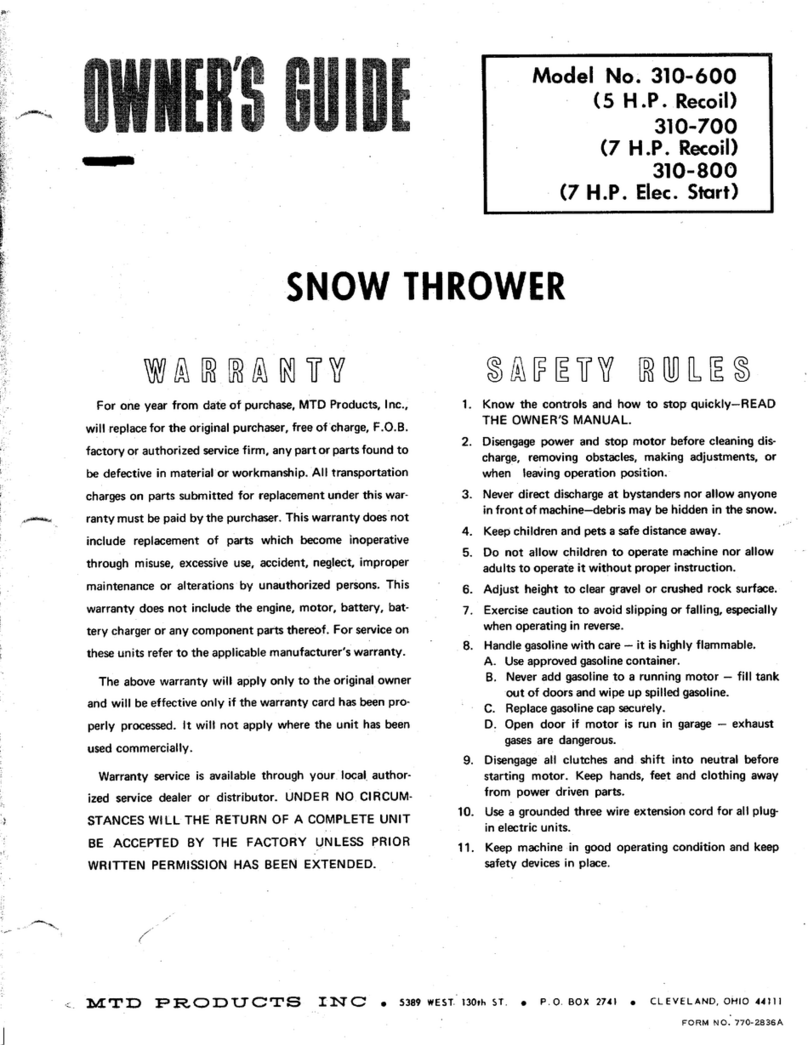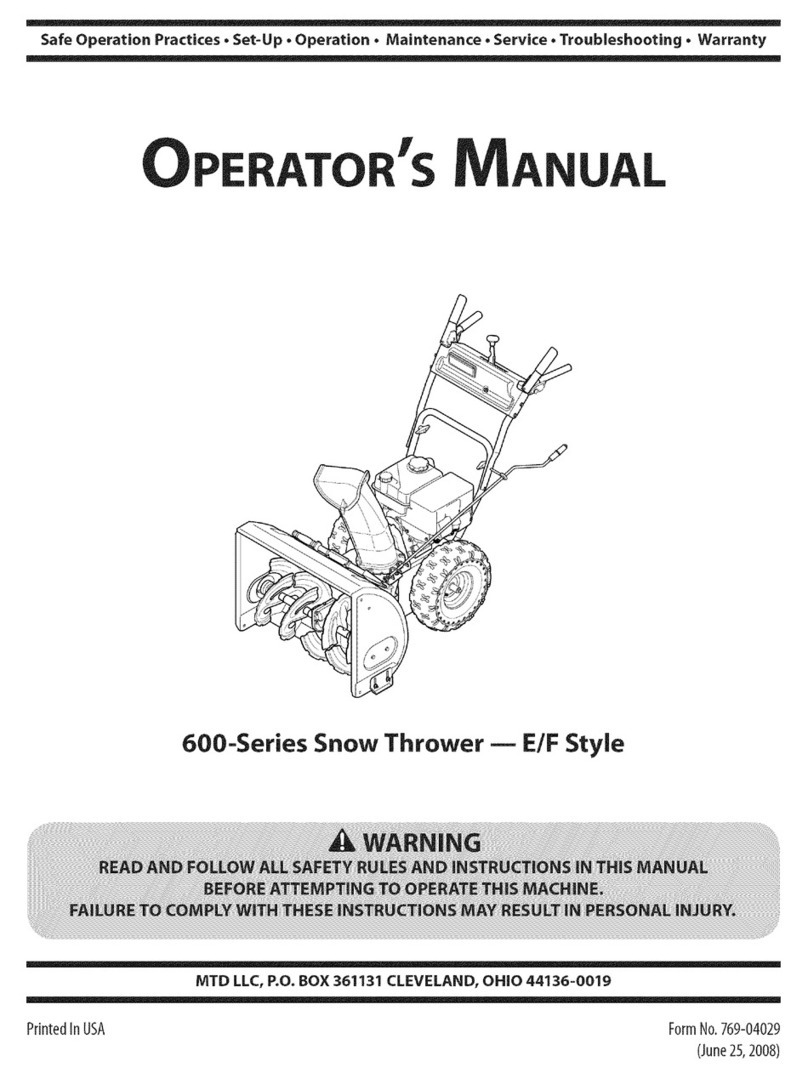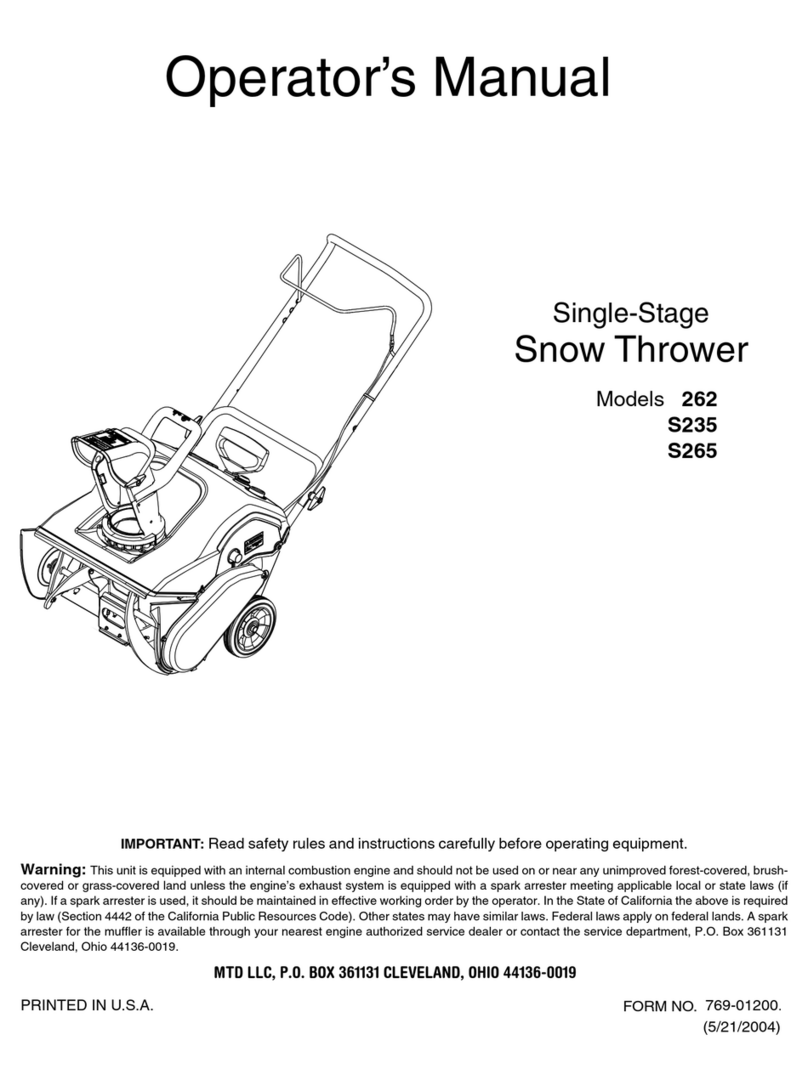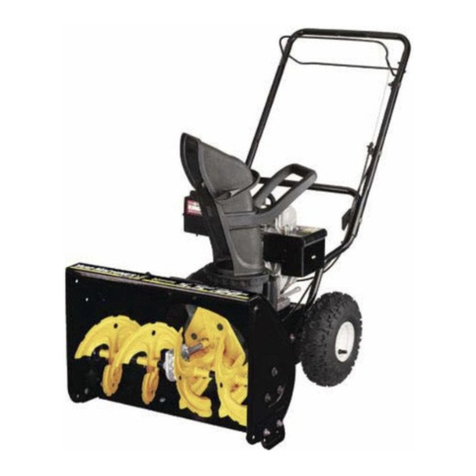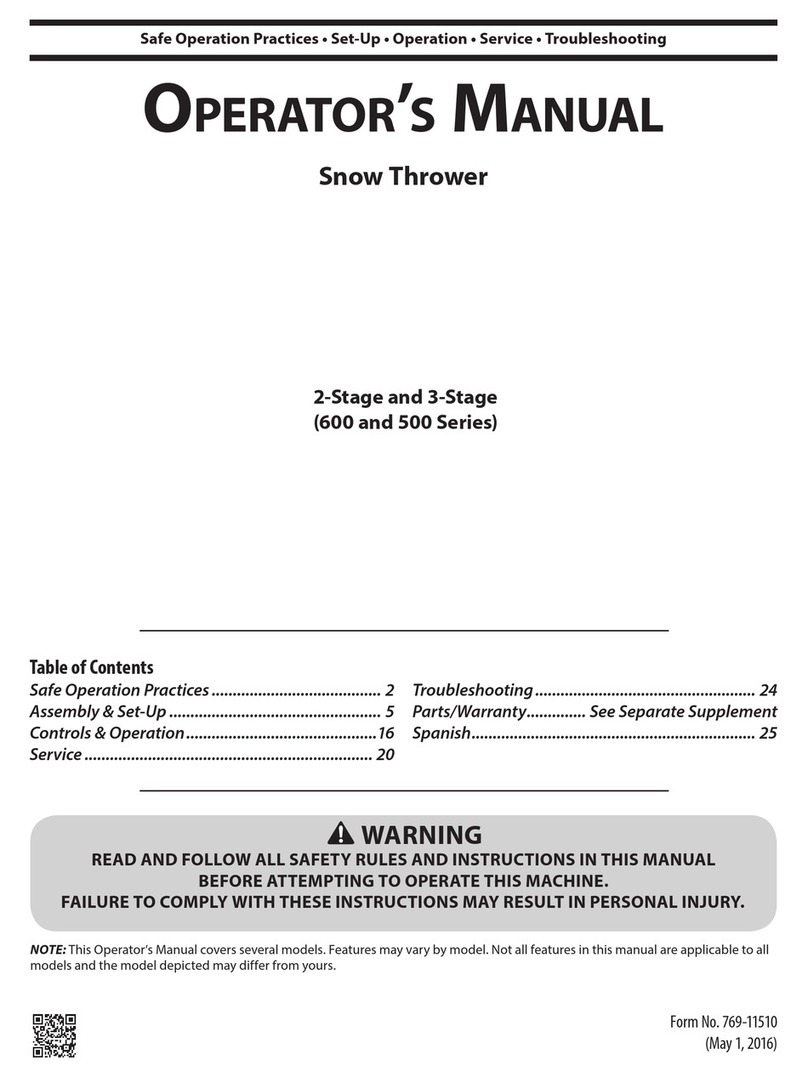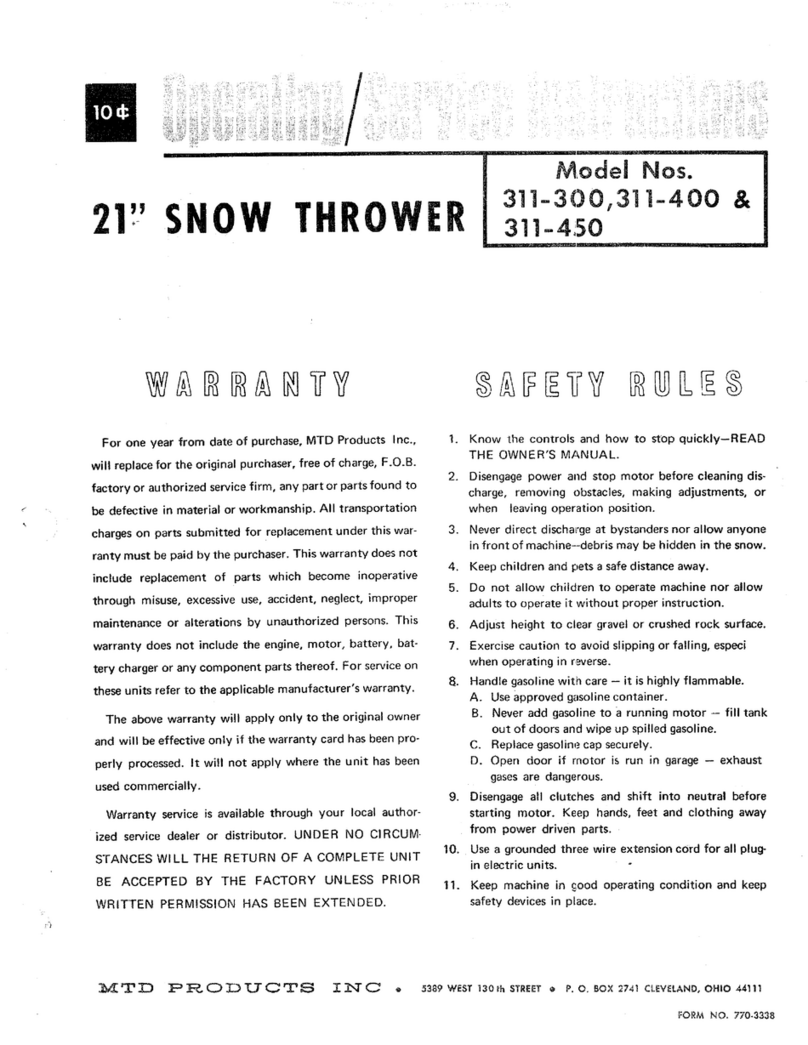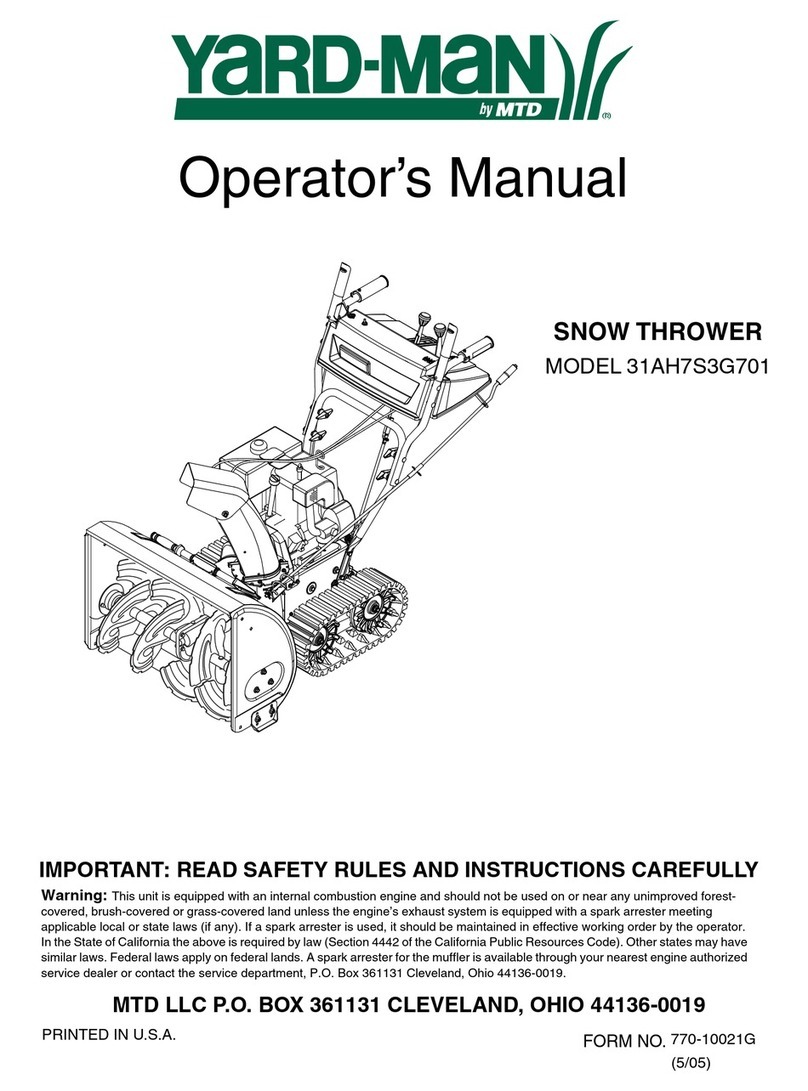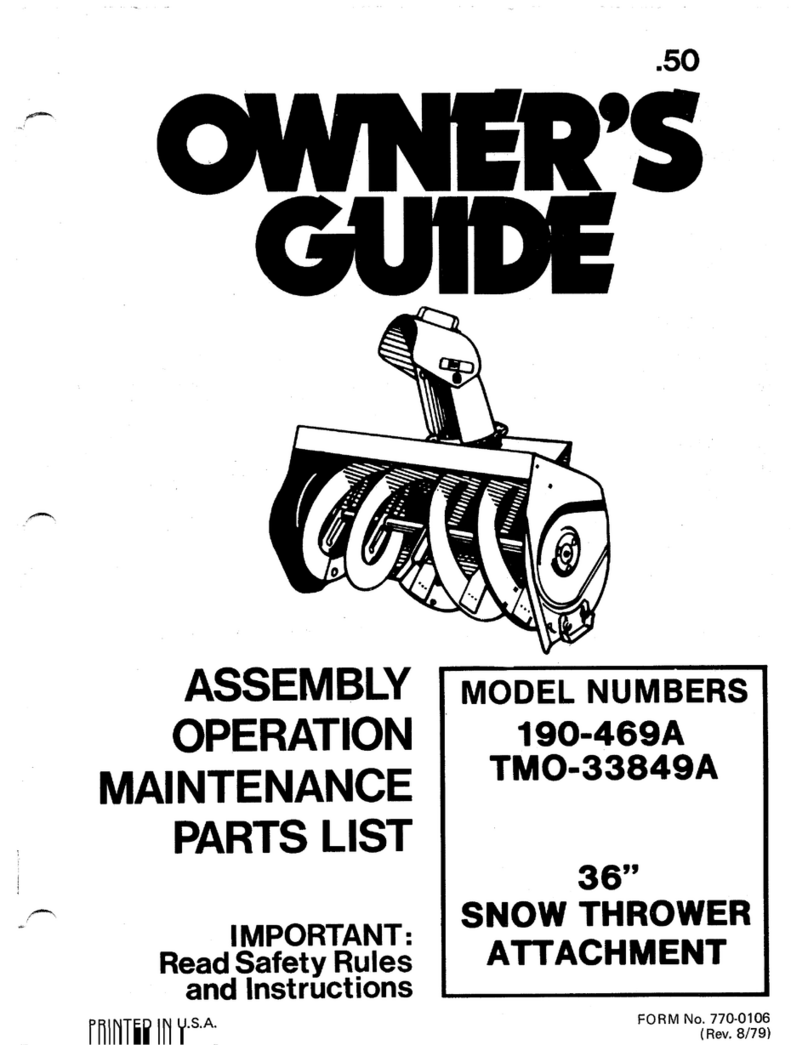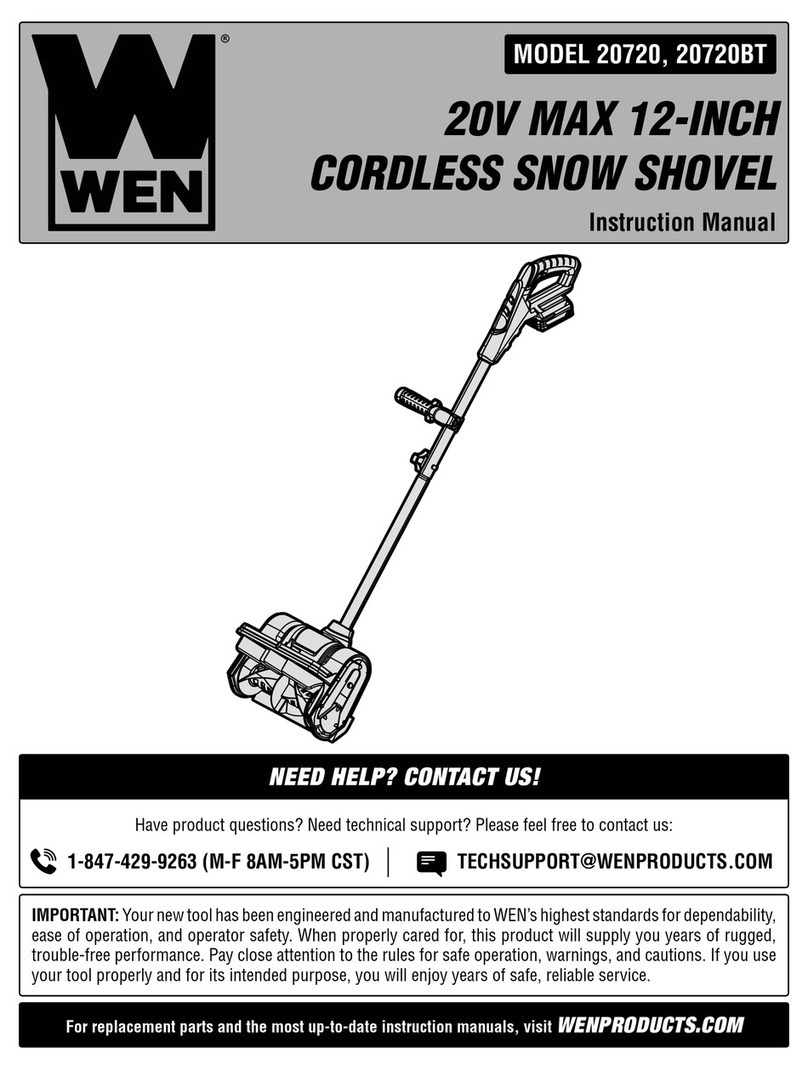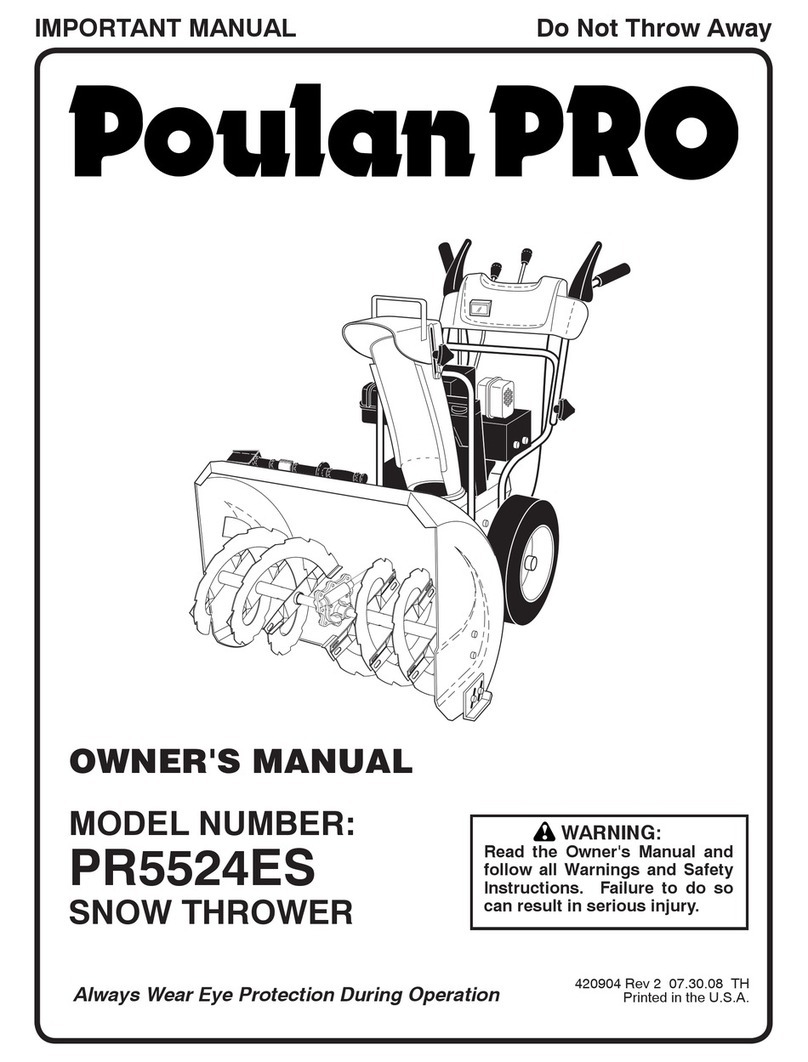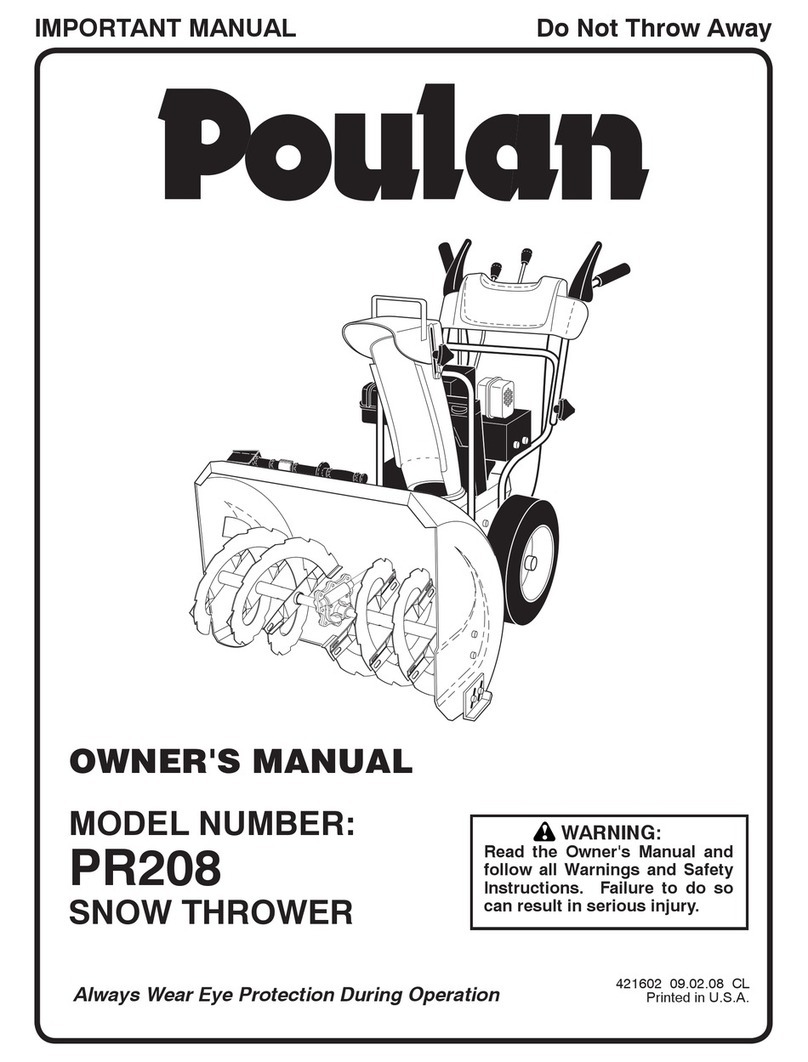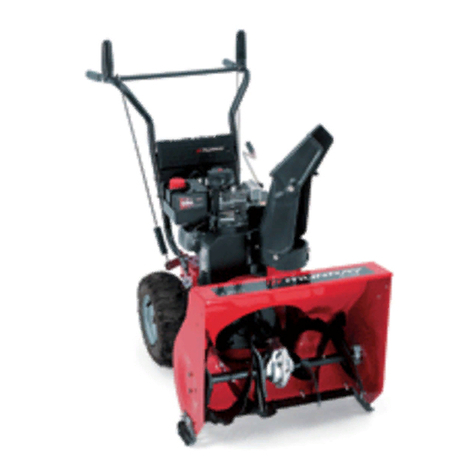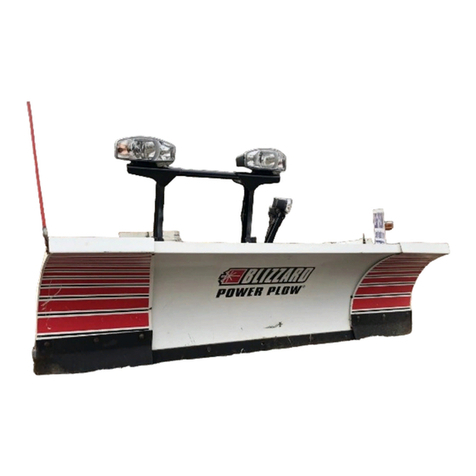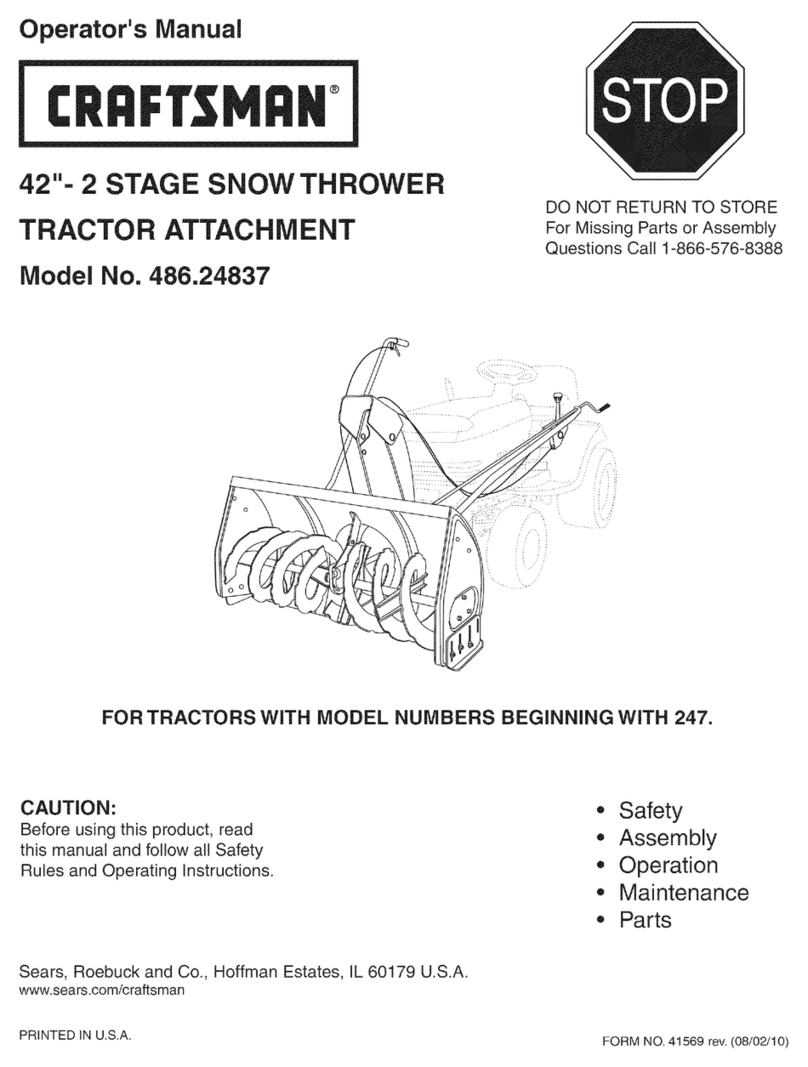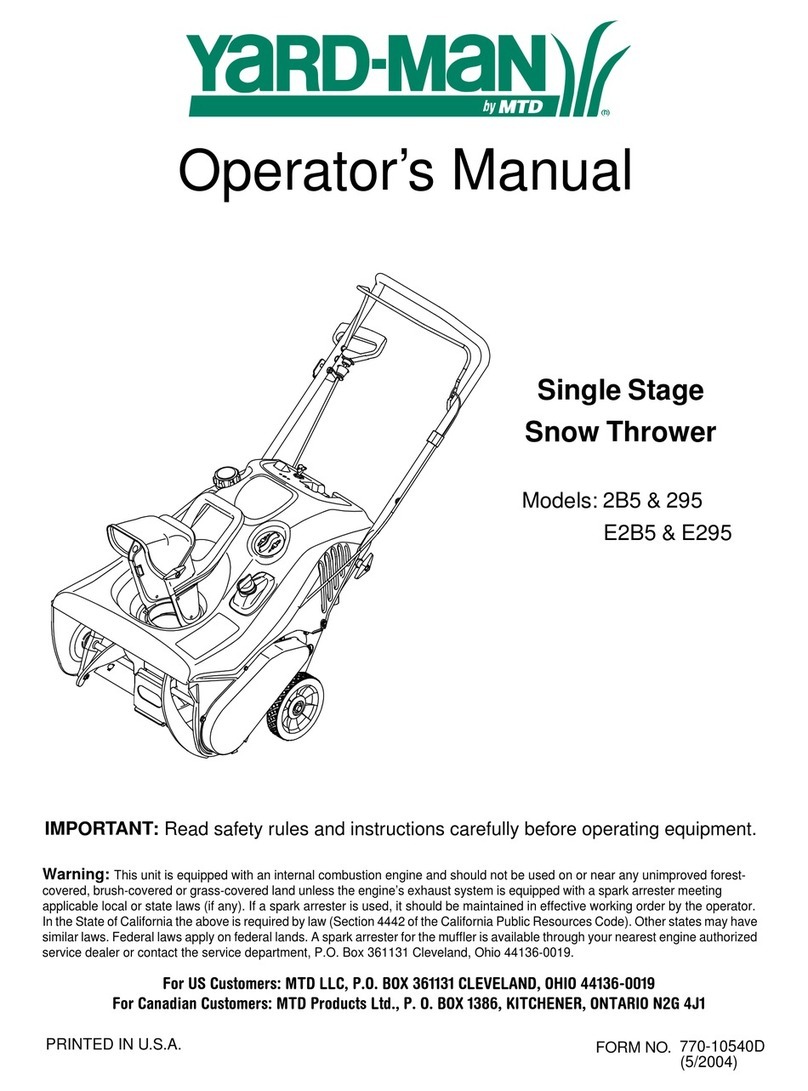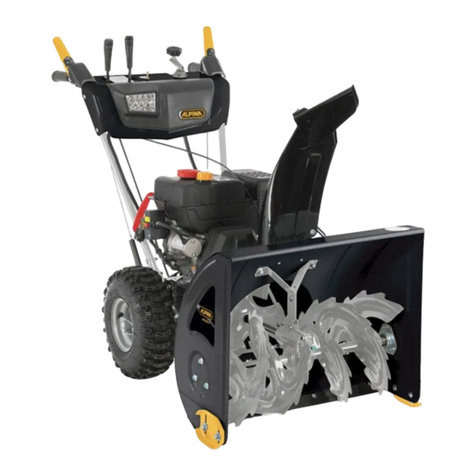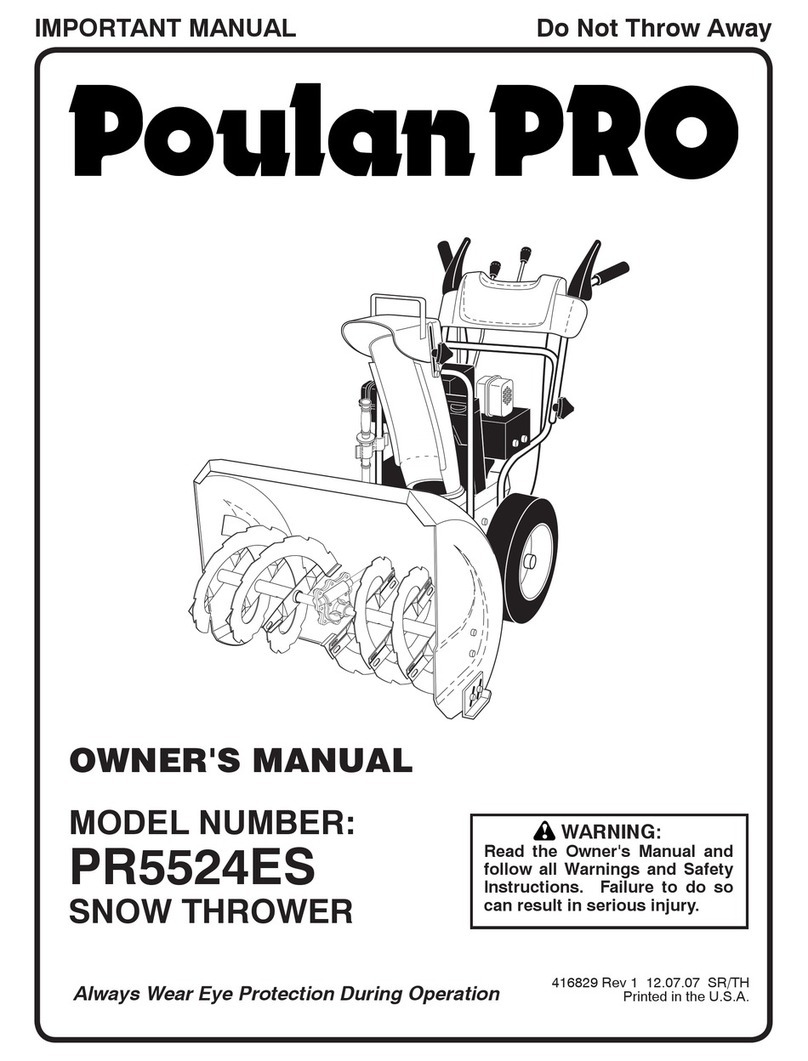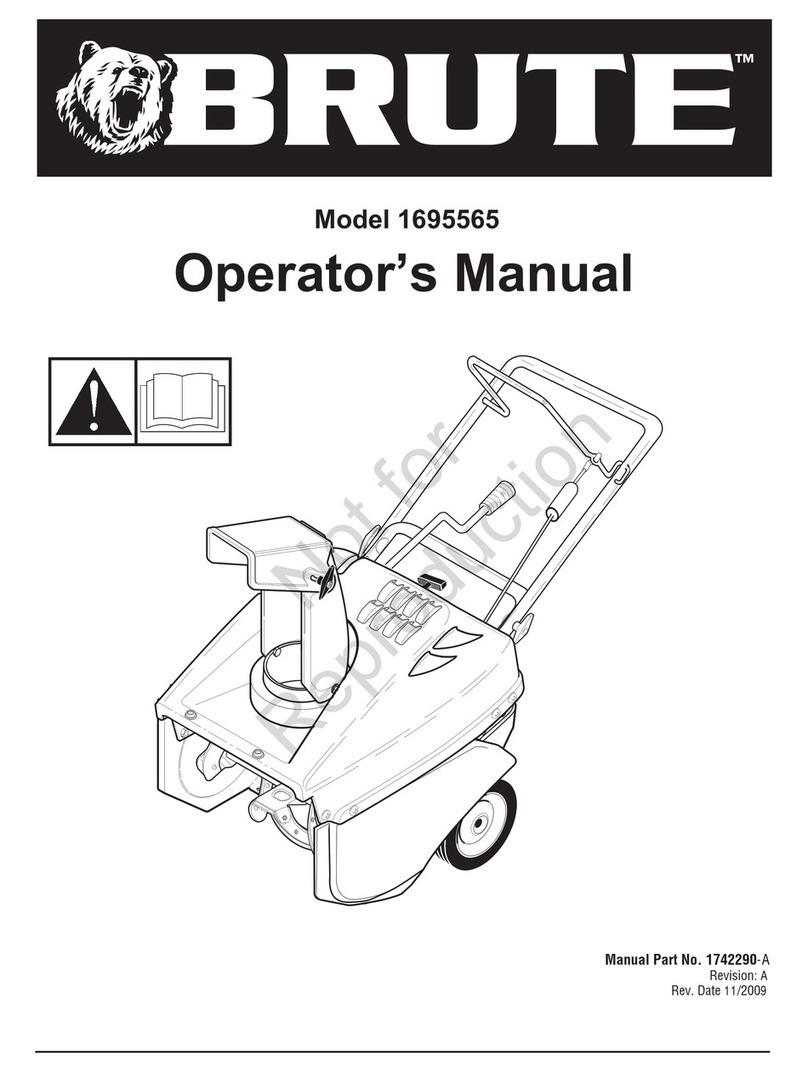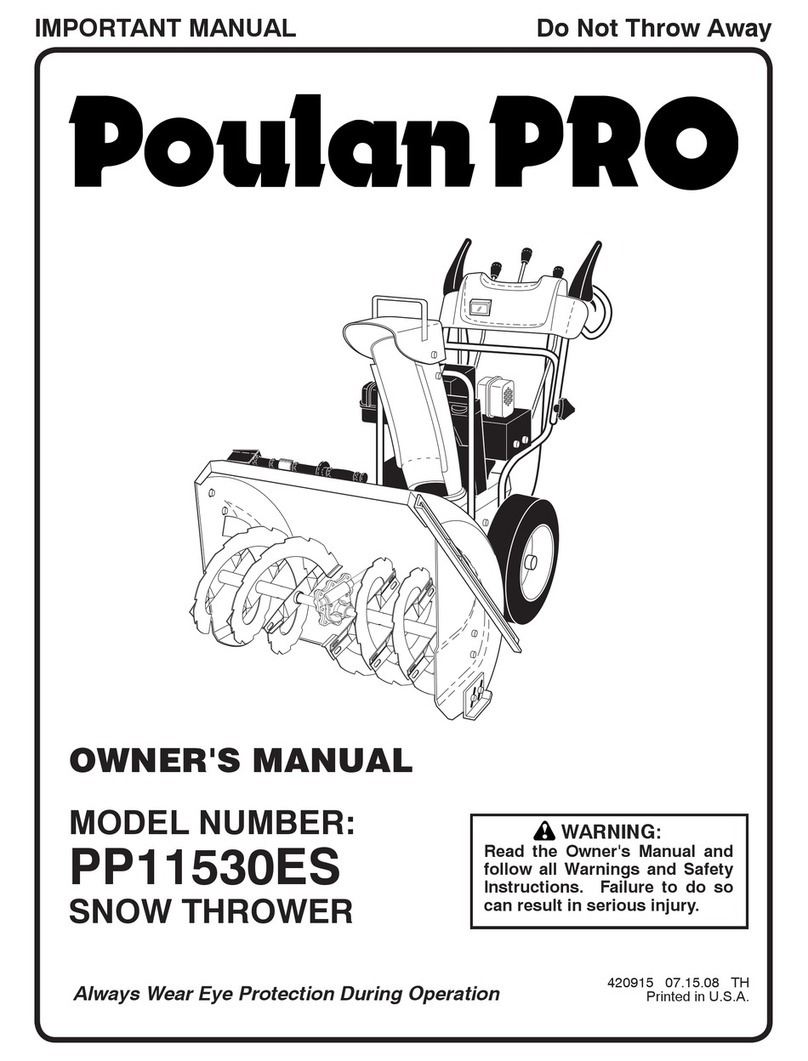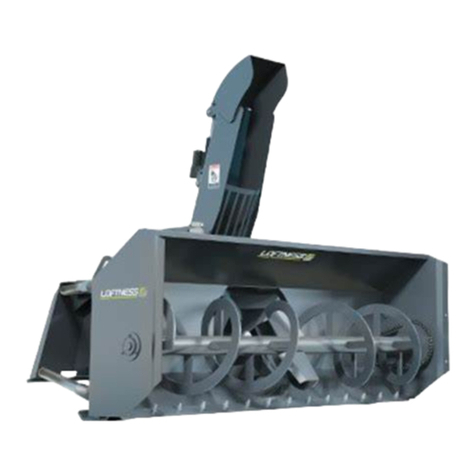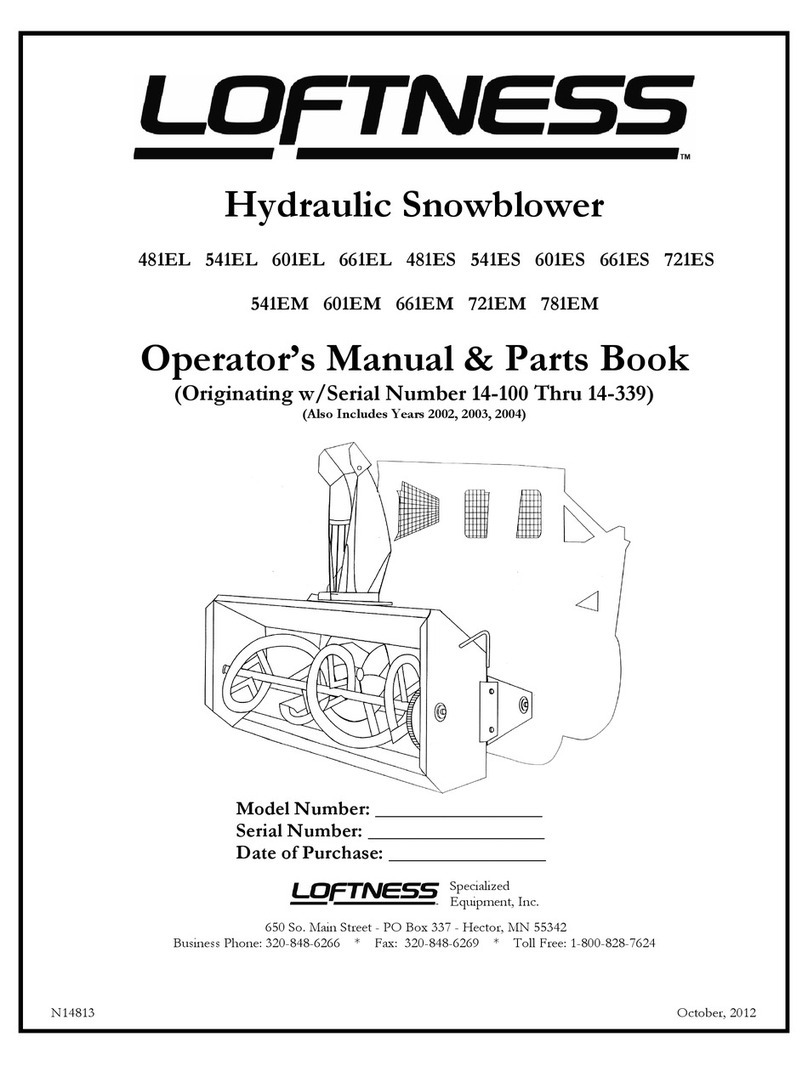
i_ WARNING:Topreventelectricshockuseonlywith
anextensioncordsuitableforoutdooruse.
15. CORDSETS:Pleaseseeyourdealerfortheappropriated
extensioncordtousewiththisproduct.Makesureyour
cordsetisingoodcondition,withacordthatisheavy
enoughtocarrythecurrentthatyourunitwilldraw.
Anundersizedcordsetwillcauseadropinlinevoltage
resultinginalossofpower,aswellasoverheating.The
tableshownaboveillustratesthecorrectsizetouse
dependingonthecordlengthandnameplateamperage
rating.Ifindoubt,usethenextheaviersizelinegauge.The
smallerthegaugenumber,theheavierthecord.Toprevent
thecordfromdisconnectingfromtheunit,usethecord
hookshownintheOperatingInstructions.
MINIMUMWIRESIZEFOREXTENSIONCORDS
FOR120VOLTAPPLIANCESUSING10-12AMPS
CordLength(ft.) 25 50 100 150
WireSize(AWG) 16 16 14 12
16. Adataplateonyourunitindicatesthevoltageused.Never
connecttheunittoanACvoltagethatdiffersfromthis
voltage.
17. Inspectallextensioncordsandtheunitpowerconnection
periodically.Lookcloselyfordeterioration,cutsorcracks
intheinsulation.Alsoinspecttheconnectionsfordamage.
Repairorreplacethecordsifanydefectsappear.
18. Topreventdisconnectionofsnowthrowercordfromthe
extensioncordduringoperation,
a. Makeaknotasshown,or
b. Usethecordretainerdescribedinthismanual
CordSet Appliance
Cord
18. When cleaning, inspecting or repairing the unit, make
certain the auger and all moving parts have stopped.
Disconnect the extension cord to prevent accidental
starting.
19. Do not abuse the extension cord. Never carry the snow
thrower by the cord or yank on the cord to disconnect it
from the receptacle.
20. Keep the extension cord away from heat, oil, and sharp
edges to prevent damage.
21. If the extension cord is damaged in any manner while
it is plugged in, pull the extension cord from the wall
receptacle.
22. Prevent any possible disconnection of the cord receptacle
from the extension cord during operation by using the
cord retainer and guide bar. Refer to the Set-Up section.
23. Avoid accidental starting. Don't carry a plugged-in snow
thrower with your finger on the switch. Be sure switch is off
when plugging in the unit.
24. Always unplug the unit and allow it to cool before putting
it into storage. Store indoors.
25. Always unplug the unit when not in use, and before
performing any maintenance or repairs.
While Operating
I. Walk, never run.
2. Be sure the snow thrower is not in contact with anything
before starting the unit.
3. Stay away from the discharge opening at all times. Keep
face, hands, and feet away from concealed moving or
rotating parts.
4. Be attentive when using the snow thrower, and stay alert
for holes in the terrain and other hidden hazards or traffic.
5. Do not use on a gravel surface or crushed rock surfaces.
Use extreme caution when crossing gravel/crushed rock
drives, walks, or roads.
6. Clear snow from slopes by going up and down. Never go
across the slope. Use caution when changing directions.
Never clear snow from steep slopes.
7. Never attempt to use the snow thrower on a roof or any
steep, inclined, slippery surfaces.
8. Never operate snow thrower without proper guards, plates
or other safety protective devices in place, and in working
order.
9. Never operate the snow thrower near glass enclosures,
automobiles, trucks, window wells, dropoffs, etc. without
proper adjustment of the snow discharge angle. Keep
children and pets away.
I O. Don't force or overload the snow thrower. The snow
thrower will perform at its best and safest when it is run at
the rate for which it was designed.
1I. Never operate the machine at high speeds on slippery
surfaces. Look behind and use care when backing up.
12. Never direct discharge towards people or allow anyone in
front of the unit while operating.
13. Wear safety glasses or goggles that are marked as meeting
ANSI Z87.1 standards when operating this unit.
14. Use the unit only in daylight or good artificial light.
15. Avoid accidental starting. Remain in the starting position
whenever starting the unit. The operator and unit must be
in a stable position while starting. See Starting/Stopping
Instructions.
4, I SECTION2 -- IMPORTANT SAFE OPERATION PRACTICES
